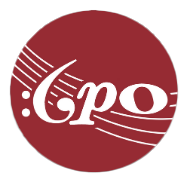"Concerto for Orchestra" by Zoltan Kodaly
Kodály’s Concerto for Orchestra – not to be confused with his Hungarian countryman Béla Bartók’s more famous, identically titled work written in 1943 – was completed in 1940, for the 50th anniversary of the Chicago Symphony Orchestra and was conducted in February of the following year by the orchestra’s music director, Frederick Stock. It is in a single large-scale span of three connected movements divided into five contrasted sections, the whole rife with the mood and at times actual quotation of Hungarian folk melody, as differentiated from the gypsy melodies which Liszt mistakenly regarded as his country’s folk music.
The Concerto was part of a vast 50th-anniversary commissioning project by the CSO, for which Stock also secured the services of Igor Stravinsky, Roy Harris, John Alden Carpenter, Alfredo Casella, William Walton, Darius Milhaud, Reinhold Glière, and Nikolai Miaskovsky. Stock’s program note for the premiere reminded the 1940 audience that “the word ‘concerto’ is used here, not in the sense of a brilliant and showy composition for a solo instrument, or instruments, with symphonic accompaniment, but in the original employment of the word to denote a combination of instruments.”
The Concerto followed by less than a year Kodály’s grand “Peacock” Variations for a similarly large orchestra and has its roots in that work, whose third variation, on a Hungarian folk song (“Fly, Peacock, Fly”), is strongly suggested in the opening (and recurring) theme here. The Concerto is, in the composer’s words, “dressed in Baroque costume.” While its melodic and rhythmic content are Hungarian to the core, its structure is indeed influenced by the Baroque form of concerto grosso, i.e., with a small group of soloists in interplay with the full ensemble. The composer designated his solo group, playing individually or in combinations, as violin, viola, and cello, but there are prominent passages for the winds – likewise, solo and in combination – as well.
The whole bears some formal resemblance to one or another of the Bach Brandenburg Concertos, with, in the first section, the unison statement of the principal theme, followed by comments from various soloists: here it is initially the woodwinds, then brass, then solo violin. The slow “movement,” reminiscent of a Baroque passacaglia, highlights solo strings and clarinet, while the final section recalls in various guises, with different instrumental spotlighting, material from the two preceding movements. A rowdy repeat of the work’s opening theme brings Kodály’s too-rarely-heard Concerto to a bracing conclusion. Concerto for Orchestra
Program Notes by Herbert Glass
